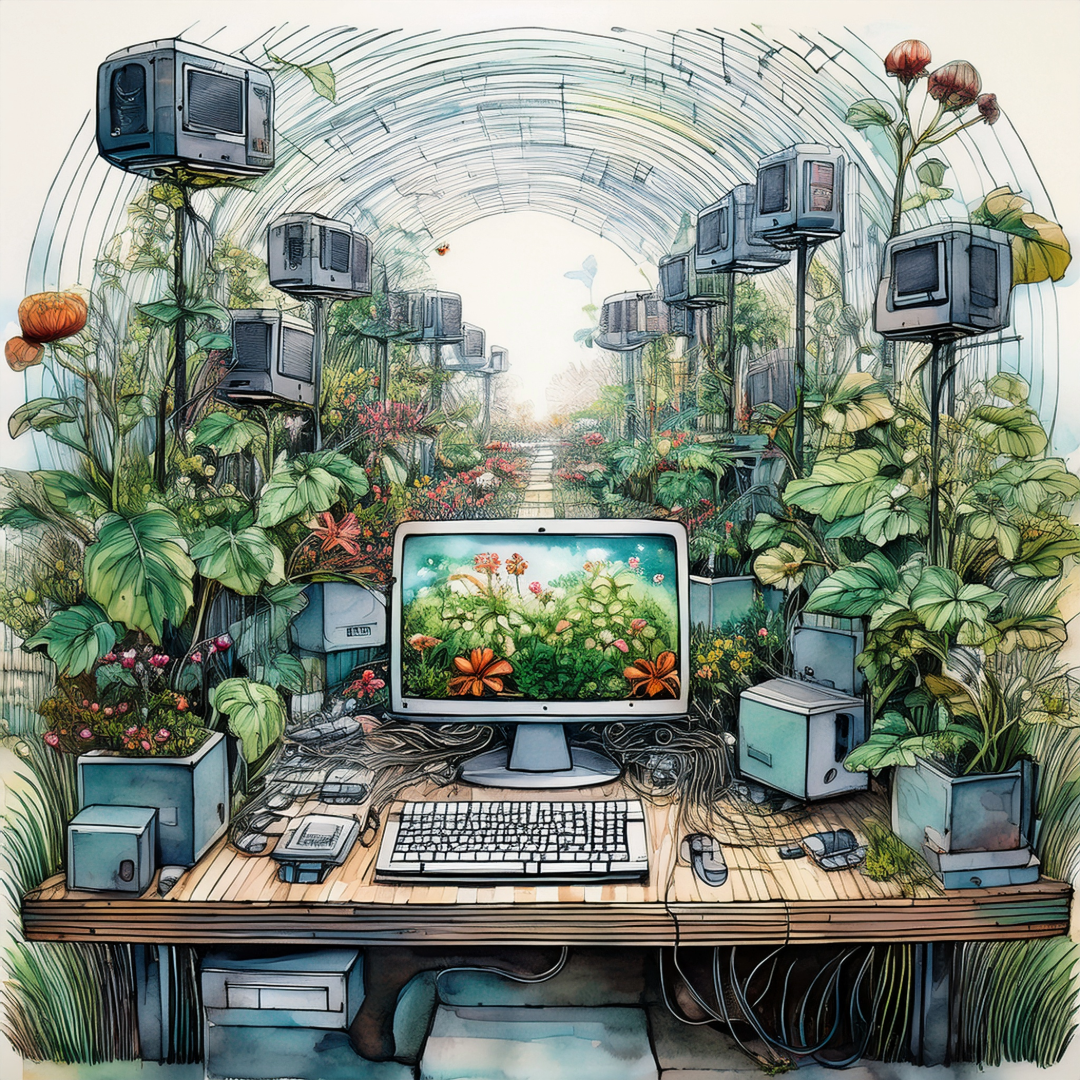Table of Contents
☀ Last time I taught a class about solarpunk, my students built an emergency off-grid intranet that I still have sitting in a weatherproof box in my office. Next semester I'll bring it in for a new cohort to play with. I hope that physically handling someone else's prototype of digital infrastructure for climate resilience can make speculative futures feel more tangible for my students.
The box in my office contains more than just wires and circuit boards and a cheap solar panel. It holds the tangible proof that another world is not only possible but already being built, one student project at a time.

Solarpunk as Generative Practice
"Solarpunk is about finding ways to make life more wonderful for us right now, and more importantly for the generations that follow us—i.e., extending human life at the species level, rather than individually. Our future must involve repurposing and creating new things from what we already have (instead of 20th century 'destroy it all and build something completely different' modernism). Our futurism is not nihilistic... it is about ingenuity, generativity... and community."
This is what we practiced in class: critical making as a form of applied anarchist theory. Students also kept "field journals for a low-carbon future," with the rule being that they had to use something they already had at hand or make something from recycled supplies. Field journals became sites for documenting our experiments with degrowth living. The off-grid intranet was our answer to the question: what happens to digital community when the power goes out?
These weren't just academic exercises; they were working prototypes exploring what life and communication might look like when centralized infrastructure fails.
Critical Making as Solarpunk Praxis

Teaching solarpunk means bridging my interests in anarchist theory, nature, and technology. We begin with imagining better futures, and then we practice building them at whatever scale we can. Next semester's class on digital infrastructure and climate change continues this thread of my teaching. When my new students hold the prototypes my former students built, they'll understand that solarpunk isn't just an aesthetic—it's about making things that might actually keep us connected when systems fail.
Future Directions: Speculative Fiction as Blueprint
I've been thinking about eventually developing a science fiction course that would explore solarpunk through storytelling and worldbuilding. HydroponicTrash's description resonates with this direction:
"At the moment, we are in the global struggle against capitalism, hierarchy, and domination. But it's interesting to read a story about how people made it through, and built a better future around some of the topics and ideas here. It makes it easier to walk in someone else's shoes so to speak and imagine yourself say in a democratic confederalist assembly of your community, voicing your opinion on a community action to help preserve endangered wildlife in your area. Or speculating what a degrowth future might look like where we lower our energy demand by creating free and open housing that is passive, and heats and cools itself, and how you might interact in an upcycled and revamped suburb with sprawling public transport that runs off low resource intensive passive solar. These things can be worked out, speculated, and shown as both a fiction, but also a path forward to imagine what the world could look like."
—HydroponicTrash, "The Good Life: Buen Vivir, Hygge, Solarpunk & Degrowth"
This connects to my growing interest in more-than-human kin networks. Maria Puig de la Bellacasa's book Matters of Care: Speculative Ethics in More Than Human Worlds offers a framework that might combine beautifully with solarpunk storytelling—exploring not just how humans might live differently, but how we might reimagine our relationships with all beings in the Anthropocene.
This note connects to my explorations of digital gardens and commonplace books.